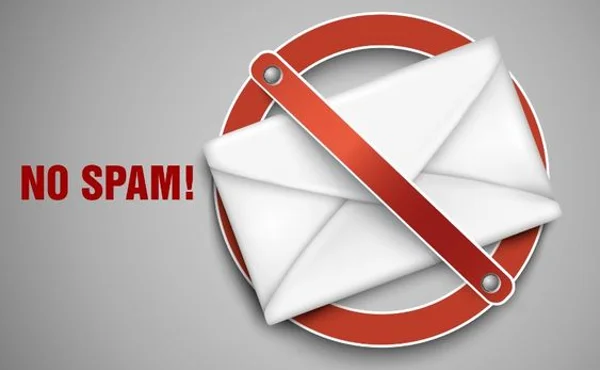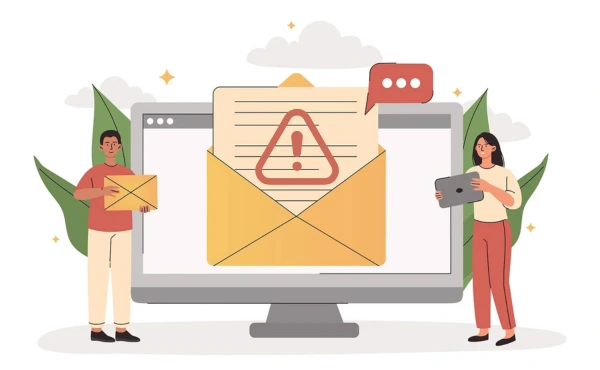Yes, Boost Inbox is designed to cater to businesses of all sizes and industries.

Cold email is a powerful and effective way to reach out to potential customers, partners, or influencers, and generate leads, sales, or collaborations. A cold email is an email that you send to someone who doesn't know you or expects to hear from you, with the aim of starting a conversation and building a relationship.
However, cold email can also be risky and challenging, as it can be easily marked as spam by the recipients or the email providers. Spam is any unwanted or unsolicited email that is sent in bulk or for malicious purposes.
It can harm your email deliverability, which is the ability of your email to reach the inbox of your recipients, and not the spam or junk folder.
In this blog post, we will discuss the 5 Reasons Why Your Cold Email Is Marked as Spam, and how to prevent them. We will also introduce you to Boost Inbox, which can help you improve your email deliverability and increase your response rate.
Common Mistakes that Can Harm Email Deliverability
These are the 5 common mistakes that can harm your email deliverability and cause your cold email to be marked as spam:
1. Purchasing email lists
Purchasing email lists is a bad idea, as it can violate the privacy and consent of the recipients, and damage your sender's reputation. These email lists are often outdated, inaccurate, or fake, and can contain spam traps, which are email addresses that are used to catch and report spammers.
Sending cold emails to purchased email lists can result in high bounce rates, low open rates, and high spam complaints, which can lower your sender's reputation and email deliverability.
2. Sending to Inactive Addresses
Sending cold emails to inactive addresses is another mistake, as it can waste your time and resources, and hurt your sender's reputation. Inactive addresses are email addresses that have not been used or opened for a long time and can indicate that the recipients are not interested in your email or have changed their email address.
Sending cold emails to inactive addresses can result in high bounce rates, low open rates, and low engagement rates, which can lower your sender's reputation and email deliverability.
3. Low Engagement Rates
Low engagement rates are a sign that your cold email is not relevant, valuable, or compelling to your recipients, and can affect your email deliverability. Engagement rates are the metrics that measure how your recipients interact with your email, such as opens, clicks, replies, forwards, and more.
Low engagement rates can indicate that your email is not reaching the right audience, or that your email content is not personalized, clear, or persuasive.
Low engagement rates can also trigger email providers to mark your email as spam, as they use engagement rates as a factor to determine the quality and legitimacy of your email.
4. Spammy Email Content
Spammy email content is content that contains words, phrases, or elements that can trigger the spam filters of the email providers, and prevent your email from reaching the inbox of your recipients.
Spam filters are the algorithms that scan and analyze your email content, and assign a spam score to your email, based on the presence and frequency of spam indicators.
Spam indicators can include:
- Misleading or deceptive subject lines
- Excessive use of capitalization, punctuation, or emojis
- Overuse of words or phrases that imply urgency, guarantee, or free offer
- Inclusion of attachments, images, or links that are not relevant or trustworthy
- Lack of personalization, customization, or segmentation
- Lack of an unsubscribe option, sender information, or privacy policy
5. Poor Email Infrastructure
Poor email infrastructure is a technical aspect of your email delivery, that can affect your email deliverability and sender reputation.
Email infrastructure refers to the configuration and setup of your email address, domain, and server, that can influence the authentication and verification of your email by the email providers.
Poor email infrastructure can include:
- Using a free or generic email address or domain, such as Gmail, Yahoo, or Hotmail
- Using a shared or unsecured email server can expose your email to hackers or spammers.
- Not implementing the email authentication protocols, such as SPF, DKIM, and DMARC, that can prove the ownership and validity of your email address and domain
- Not monitoring the email deliverability metrics, such as bounce rate, spam rate, open rate, and click rate, that can indicate the health and performance of your email campaign
Strategies to Avoid These Mistakes
These are the strategies that can help you avoid these mistakes and improve your email deliverability and sender reputation:
Using Email Verification Tools
Email verification tools are software applications that can help you validate and clean your email list, and remove any invalid, inactive, or fake email addresses.
Email verification tools can also help you identify and avoid any spam traps, that can harm your sender's reputation and email deliverability.
Using email verification tools can help you reduce your bounce rate, increase your open rate, and improve your email quality and accuracy.
Segmenting Email Lists
Segmenting email lists is the process of dividing your email list into smaller groups, based on various criteria, such as location, industry, role, interest, behavior, and more.
Segmenting email lists can help you target and reach the right audience, and tailor your email content and offer to their specific needs and preferences.
These email lists can help you increase your engagement rate, conversion rate, and customer loyalty, and improve your email relevance and value.
Personalizing Email Content
Personalizing email content is the process of customizing your email content and tone, based on the information and data that you have about your recipients, such as their name, company, pain point, goal, and more.
This email content can help you build rapport and trust with your recipients, and capture their attention and interest.
This email content can help you increase your reply rate, click rate, and sales rate, and improve your email persuasiveness and credibility.
How Boost Inbox Helps Improve Email Deliverability
Boost Inbox can help you improve your email deliverability and increase your response rate. Boost Inbox is an email warm-up tool that interacts with your inbox in a human way, to improve your sender's reputation and deliverability.
It works with all top email service providers, such as Gmail, Outlook, Yahoo, and more.
Boost Inbox offers the following benefits:
Built-in Email Verification: Boost Inbox has a built-in email verification feature, that can help you validate and clean your email list, and remove any invalid, inactive, or fake email addresses. Boost Inbox can also help you identify and avoid any spam traps, that can harm your sender's reputation and email deliverability.
This can help you reduce your bounce rate, increase your open rate, and improve your email quality and accuracy.
Real-Time Feedback on Sending Health: Boost Inbox provides real-time feedback on your sending health, and monitors and tracks your email deliverability metrics, such as bounce rate, spam rate, etc.
It can help you increase your engagement rate, conversion rate, and customer loyalty, and improve your email relevance and value.
Conclusion
Email deliverability is crucial for the success of your cold email campaign, as it affects your open rate, click rate, reply rate, and conversion rate. Email deliverability also affects your sender reputation, which is the score that email providers assign to your email address or domain, based on your email behavior and performance.
A low sender reputation can result in your email being blocked, bounced, or filtered out by the email providers.
Therefore, you need to avoid the common mistakes that can harm your email deliverability, and follow the best practices that can improve your email deliverability.
You also need to use a tool like Boost Inbox that can help you improve your email deliverability and increase your response rate.
What to read next
Absolutely! Boost Inbox is compatible with most major email service providers.
The warmup process duration may vary depending on your email volume, but it typically ranges from a few days to a couple of weeks.
Yes, Boost Inbox offers dedicated customer support to assist you throughout the warmup process.
While it's possible, it's best to start the warmup process from the beginning with Boost Inbox for optimal results.

